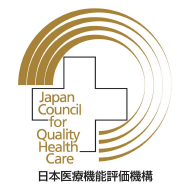Quality of Care Reporting (QI)
Quality of Care Reporting (QI)
What is meant by “hospital quality”? Is it "hospital reputation" or "hospital name recognition"?
In recent years, in order to improve the quality and safety of medical care provided at hospitals, efforts have been made to investigate and publish patient evaluations, treatment methods, and results.
Since 2010, our hospital has participated in the "Japan Hospital Association QI Project" (http://www.hospital.or.jp/qip/) and started activities to improve the quality of medical care at hospitals. QI (Quality Indicator) is an index such as a numerical value that serves as a guideline for evaluating the quality of medical care.
We are pleased to announce our 2022 QI.In addition to the QI of our hospital, the median value of 353 facilities participating in the Japanese Hospital Association QI project is posted as a reference value.
When looking at the contents, it is not possible to simply compare the superiority or inferiority of hospital quality only by comparing with this median value.This is because the role of each hospital, regional differences, the age group of patients, the type of illness, and the severity of illness differ from hospital to hospital.Therefore, please use it as a reference only.
We will publish the QI every year from now on.The purpose is not to make comparisons between hospitals, but to look at the QI of our hospital year by year, and work on improving the "quality of the hospital" in a positive direction.As a result, we aim to provide high-quality medical care with high patient satisfaction.
Tsukuba Medical Center Hospital
Hospital Director Mototsugu Kono
- Patient Satisfaction (Outpatients)/Patient Satisfaction (Inpatients)
- Incidence of falls/falls among hospitalized patients, incidence of injuries due to falls/falls (levels XNUMX, XNUMX and above)
- Incidence of pressure ulcers
- Referral ratio/reverse referral ratio
- Ambulance/hotline demand rate
- Prophylactic antibiotic administration rate within XNUMX hour before the start of surgery in a specific surgical procedure
- Unplanned readmission rate within 4 weeks after discharge
- Prescription ratio of anticoagulants to patients with cerebral infarction (including TIA) accompanied by atrial fibrillation
- Percentage of stroke patients undergoing early rehabilitation after hospitalization
- Number of incident/accident reports per month/1 beds/ratio of reports by doctors to all reports
*The median value published by the Japan Hospital Association “QI Project 2023” in October 10 is quoted.
In addition, we will update the indicators for FY2023 as soon as the result report of "QI Project 2023" is announced.






